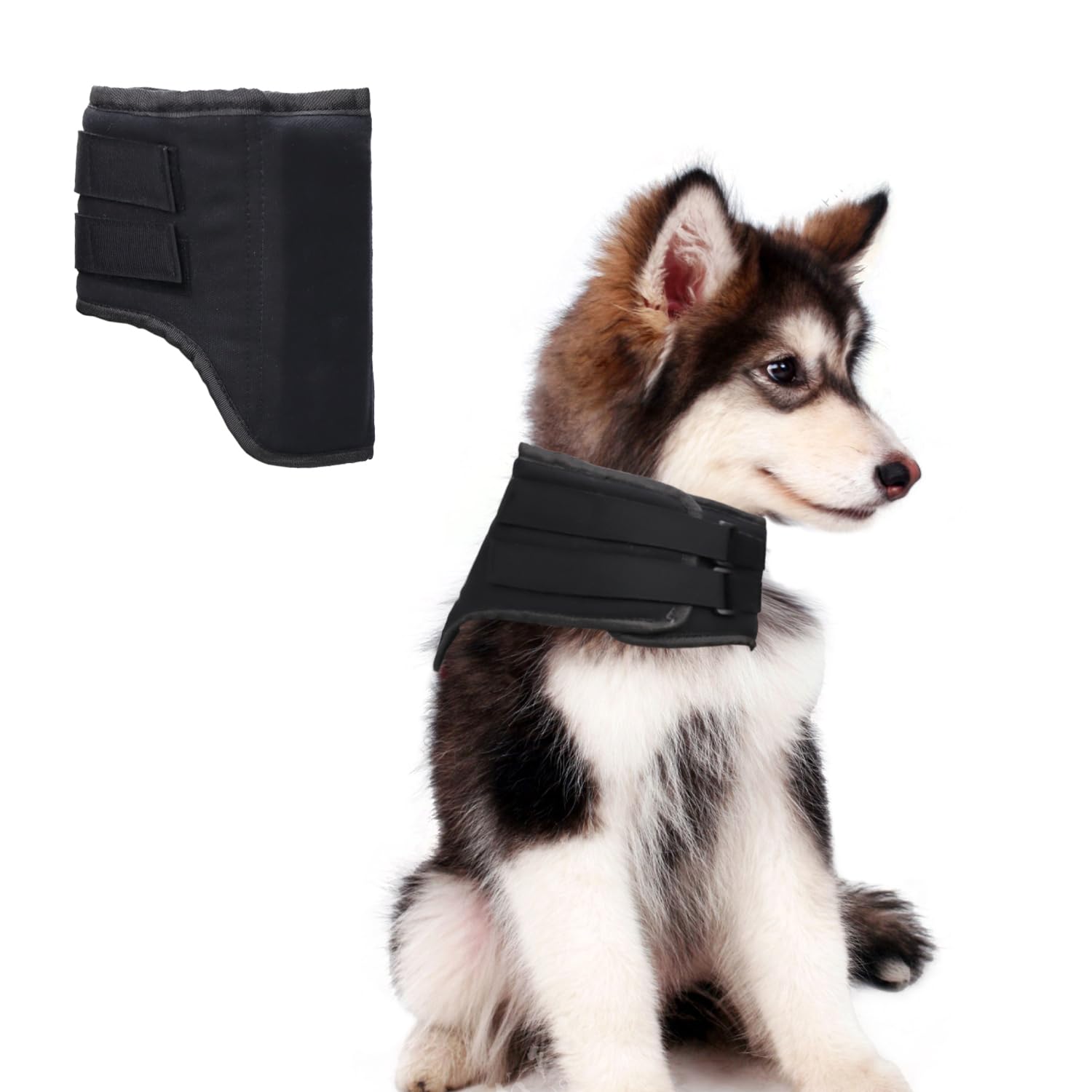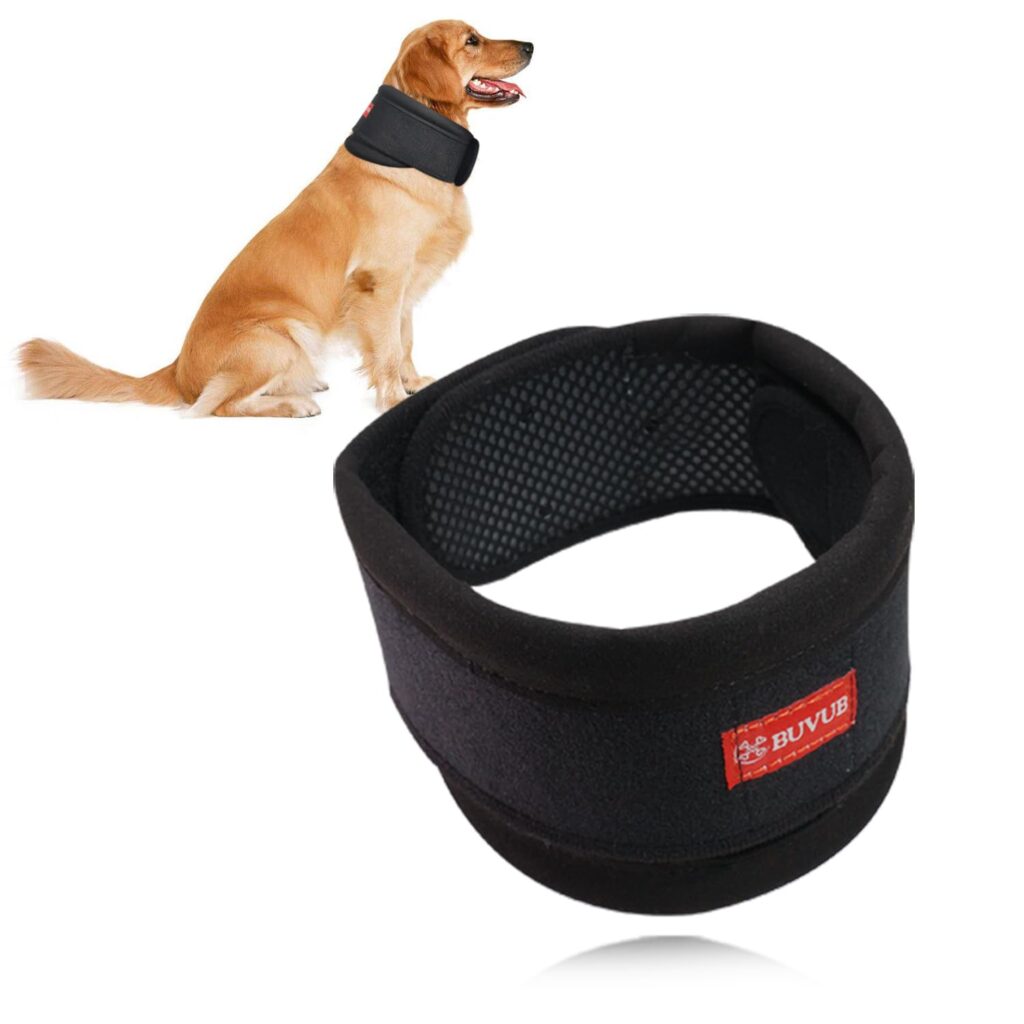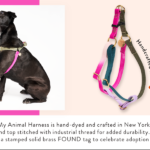Can Harnesses Prevent Neck Injuries in Dogs? A Safer Solution for Your Furry Friend
When it comes to our dogs, their safety and well-being are always top of mind, especially during outdoor walks and playtime. One pressing concern many dog owners face is the potential for neck injuries caused by traditional collars. Can harnesses prevent neck injuries in dogs? The answer is a resounding yes. Harnesses offer a safer and more comfortable alternative to collars by distributing the force of pulling across the dog’s chest and shoulders. In this article, we’ll explore why harnesses are a smarter choice for your dog’s health and how to select the right one to protect them from unnecessary injuries.
What Are Neck Injuries in Dogs?
Before diving into how harnesses can prevent neck injuries, it’s essential to understand what neck injuries in dogs are and why they occur. Many dogs, especially those that pull on their leash, are at risk of injuring their necks and spine. These injuries can range from minor discomfort to severe, life-threatening conditions such as:
- Collapsed trachea – A condition where the windpipe becomes weakened and collapses, often due to the pressure exerted by a collar.
- Cervical spine issues – Excessive pulling or jerking can cause stress on the cervical spine, leading to pain, inflammation, and even long-term damage.
- Breathing problems – Continuous pressure on the neck area can impede normal airflow, leading to labored breathing, coughing, and even choking in extreme cases.
These injuries are particularly concerning for small or brachycephalic dog breeds, such as Chihuahuas, Pugs, or Bulldogs, which are more vulnerable to neck and respiratory problems. Harnesses can significantly reduce these risks by eliminating the pressure on the neck and redistributing it across safer parts of the dog’s body.
Can Harnesses Prevent Neck Injuries in Dogs?
Harnesses are designed to distribute the pulling force of your dog’s movements over a broader area, significantly reducing the risk of neck injuries. Unlike traditional collars that apply concentrated pressure on the dog’s neck and trachea, a harness spreads this force across the chest and shoulders, preventing strain on the delicate areas of the neck.
Why Harnesses Are Safer than Collars
- Even Distribution of Pressure: When a dog pulls on a leash, the force is spread across the body, particularly the chest and shoulders, minimizing the chances of neck trauma.
- Prevents Choking: Traditional collars, especially tight ones, can constrict the dog’s airway, leading to choking. Harnesses do not put pressure on the neck or throat, ensuring that your dog can breathe freely.
- Reduces Tracheal Damage: Over time, collars can cause significant damage to the trachea (windpipe), leading to conditions like collapsed trachea. Harnesses, however, eliminate this risk by shifting the pressure from the neck to the chest.
This redistribution of pressure is especially important for active or excitable dogs, who may frequently lunge or pull when on a walk. Harnesses allow for better control and reduce the likelihood of sudden jerking movements that could otherwise cause serious injury.
Tip: If you’re unsure whether a harness will benefit your dog, observe their walking behavior. Dogs that frequently pull on their leash or exhibit tugging behavior should definitely switch to a harness for their own safety.
The Benefits of Using a Harness for Your Dog
Switching from a collar to a harness can provide a wide range of benefits for your dog, not only in preventing neck injuries but also in improving comfort and control during walks. Let’s take a closer look at some of these advantages:
1. Pressure Distribution
One of the primary benefits of harnesses is how they distribute pressure evenly across the dog’s body. Unlike collars, which focus all the tension on the neck, harnesses spread the force over the chest and shoulders, significantly reducing the risk of neck injuries, such as collapsed trachea or spinal issues.
2. Improved Comfort
Many dogs find harnesses much more comfortable than collars. Harnesses, especially those designed for specific breeds, allow for a full range of movement while keeping the dog secure. This comfort is particularly beneficial for dogs with neck or back problems, as they won’t be restricted by the collar’s tightness around their neck.
3. Better Control
If you have a strong or excitable dog, a harness can provide better control during walks. Harnesses allow you to guide your dog more effectively and prevent them from pulling too hard. This is especially important for dogs that tend to lunge after squirrels, cars, or other distractions. With better control, you can avoid situations that might lead to injury.

ALT text: A dog wearing a harness, providing better control and comfort during walks.
4. Safety During Recovery
For dogs recovering from surgery or injury, a harness offers the added benefit of stability and support. Whether your dog is recovering from joint surgery, a back injury, or a neck problem, a harness can help manage their movements and reduce strain on vulnerable areas of their body.
What to Consider When Choosing a Harness
Choosing the right harness for your dog is crucial to ensuring their safety and comfort. Not all harnesses are created equal, and selecting one that fits properly is essential for avoiding potential issues. Here are some important factors to consider when choosing a harness:
Fit is Key
An ill-fitting harness can cause discomfort and even injury, just like an ill-fitting collar. To ensure the best fit, measure your dog’s chest girth and neck circumference. A harness should allow you to comfortably slip two fingers between the dog’s body and the harness. Avoid overly tight or loose designs, as they can lead to chafing or restrict your dog’s movement.
Type of Harness
Different types of harnesses serve different needs. Here are the most common types:
- Front-clip harnesses: These are ideal for dogs that pull on the leash. The front attachment discourages pulling and redirects the dog’s attention toward you, helping with training.
- Back-clip harnesses: These are a more relaxed option for calm dogs that don’t pull much. They allow for more freedom of movement without causing discomfort.
- Vest-style harnesses: These are great for dogs that require additional comfort and security, such as older dogs or those with joint issues.
When choosing a harness, consider your dog’s size, activity level, and any specific health issues.
Shop for the Best Dog Harness
If you’re ready to make the switch to a harness, head over to Found My Animal for a high-quality, durable option that’s both stylish and functional. Click here to shop now and use the code “mytopdeals10” to save 10% on your purchase!
In the next section, we’ll dive into how to properly use your new harness and what to do if your dog shows signs of discomfort or resistance. Stay tuned for more helpful tips on making the most out of your dog’s harness!
How to Properly Use a Harness to Prevent Neck Injuries in Dogs
Once you’ve chosen the right harness for your dog, it’s important to use it correctly to maximize its benefits. A properly used harness can make a significant difference in preventing neck injuries and ensuring your dog’s comfort during walks. Here’s how to ensure that your dog’s harness is used effectively:
Step 1: Ensure a Proper Fit
Before you even think about walking your dog, you need to ensure that the harness fits properly. An ill-fitting harness can cause discomfort or even injury, defeating the purpose of preventing neck strain. Follow these guidelines:
- Measure your dog: Measure the girth of your dog’s chest (just behind the front legs) and neck to ensure you choose the right size.
- Adjust the straps: The harness should fit snugly but not tightly. You should be able to slide two fingers comfortably between the harness and your dog’s body.
- Check for chafing: After a short walk, inspect your dog’s skin for any signs of rubbing or irritation, especially around the armpits and neck area.
Step 2: Attach the Leash Correctly
It’s crucial to attach the leash to the correct part of the harness to ensure maximum control and safety:
- Front-clip harnesses: Attach the leash to the front ring to discourage pulling. This helps redirect your dog’s attention and makes training more effective.
- Back-clip harnesses: Attach the leash to the back ring for a more relaxed walk, ideal for calm dogs that don’t pull as much.
- Never use the collar: Ensure that the leash is always attached to the harness and not to the dog’s collar, as this can negate the benefits of the harness in terms of neck injury prevention.
Step 3: Observe Your Dog’s Comfort and Behavior
After adjusting the harness, monitor your dog’s behavior. Some dogs may resist wearing a harness initially. Here’s what to do:
- Give them time: Let your dog wear the harness around the house for a few minutes each day to get used to it before taking them on a walk.
- Watch for signs of discomfort: If your dog is excessively pulling, scratching, or showing signs of distress, it may be time to adjust the fit or try a different harness style.
By following these steps, you ensure that the harness works as intended, reducing the risk of neck injuries and enhancing your dog’s walking experience.
Frequently Asked Questions About Dog Harnesses
What makes Found My Animal products unique?
Found My Animal products stand out because they are made with high-quality materials, designed to provide both style and function. Their harnesses are built for durability and comfort, making them a great choice for active dogs that need both safety and freedom of movement. Whether you’re looking for a leash, collar, or harness, each product is crafted with attention to detail, ensuring both reliability and elegance.
How can I use the discount code mytopdeals10 at checkout?
Using the discount code mytopdeals10 is easy! Just follow these simple steps:
- Visit Found My Animal.
- Add your desired items (such as a harness) to your cart.
- At checkout, enter mytopdeals10 in the promo code box.
- Enjoy 10% off your purchase!
Can a harness prevent neck injuries in all dog breeds?
While harnesses are particularly beneficial for smaller dogs and those prone to neck or respiratory issues, they can prevent neck injuries in dogs of all sizes. By distributing the pulling force evenly across the chest and shoulders, harnesses reduce strain on the neck, which is important for all dogs, particularly those that tend to pull on the leash.
Why is a front-clip harness better for training?
A front-clip harness helps discourage pulling by redirecting your dog’s attention. When a dog pulls on a leash, the front clip causes the dog to turn toward the owner, making it easier to control them. This type of harness is ideal for training, especially for dogs that are still learning proper walking behavior.
Can a harness cause discomfort to my dog?
When fitted correctly, a harness should not cause any discomfort. However, if the harness is too tight or poorly designed, it can lead to chafing or irritation. Always ensure the harness is the right size and check for any signs of discomfort during walks.
Conclusion: Why Harnesses Are the Safer Choice for Your Dog
In conclusion, can harnesses prevent neck injuries in dogs? Absolutely. Harnesses provide a safer, more comfortable solution for preventing neck injuries that are commonly caused by traditional collars. By distributing the pulling force over a larger area of the body, harnesses reduce the strain on the neck, trachea, and spine, making them a safer alternative, particularly for active or small dogs prone to injury.
When selecting a harness, remember to choose one that fits well, suits your dog’s needs, and complements their walking behavior. A well-fitted harness can make all the difference in your dog’s safety and comfort during walks, while also helping you maintain control over your dog’s movements.
Ready to switch to a harness? Click here to shop now at Found My Animal and use the code “mytopdeals10” to save 10% on your purchase. Keep your dog safe and happy with the right harness today!
Call to Action
Don’t wait—give your dog the comfort and safety they deserve! Shop Found My Animal harnesses now and use the discount code mytopdeals10 at checkout to save 10%!



